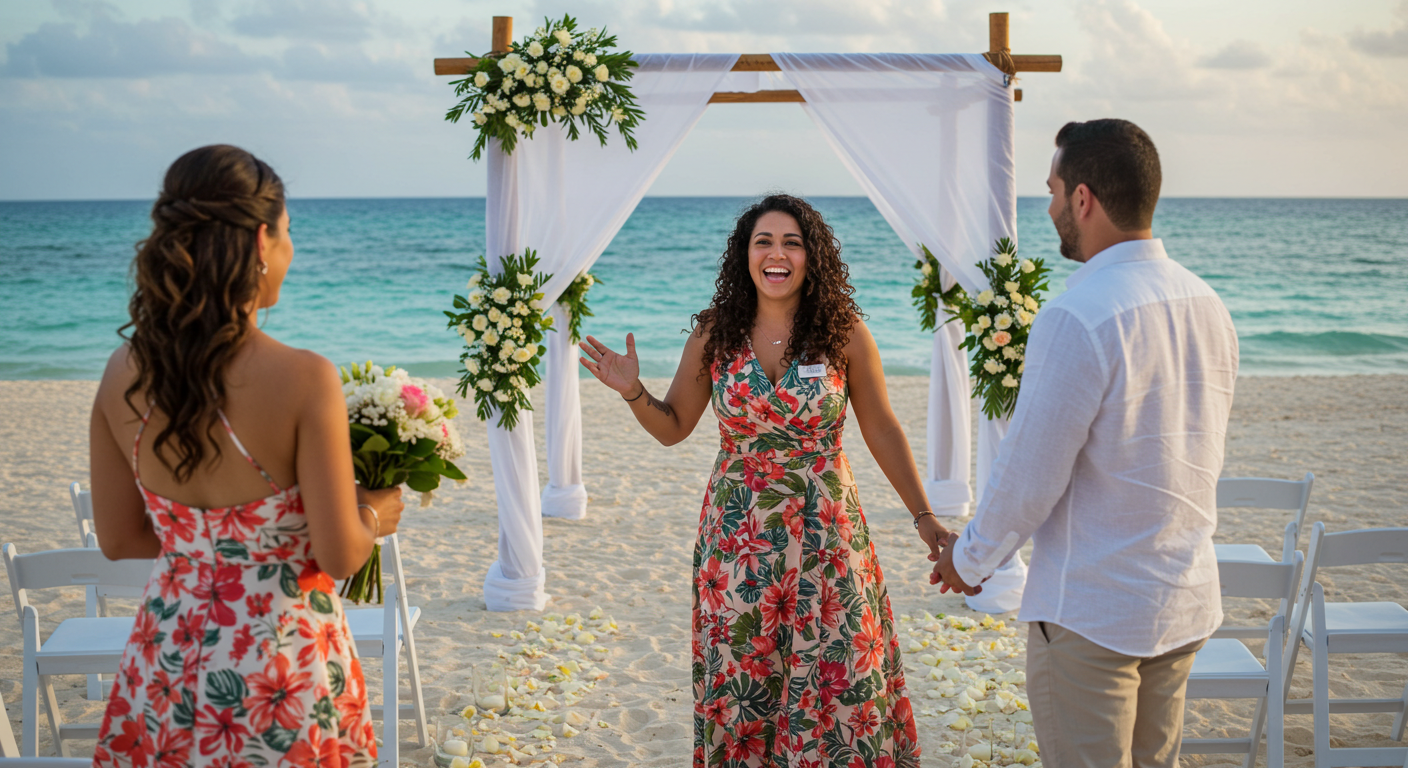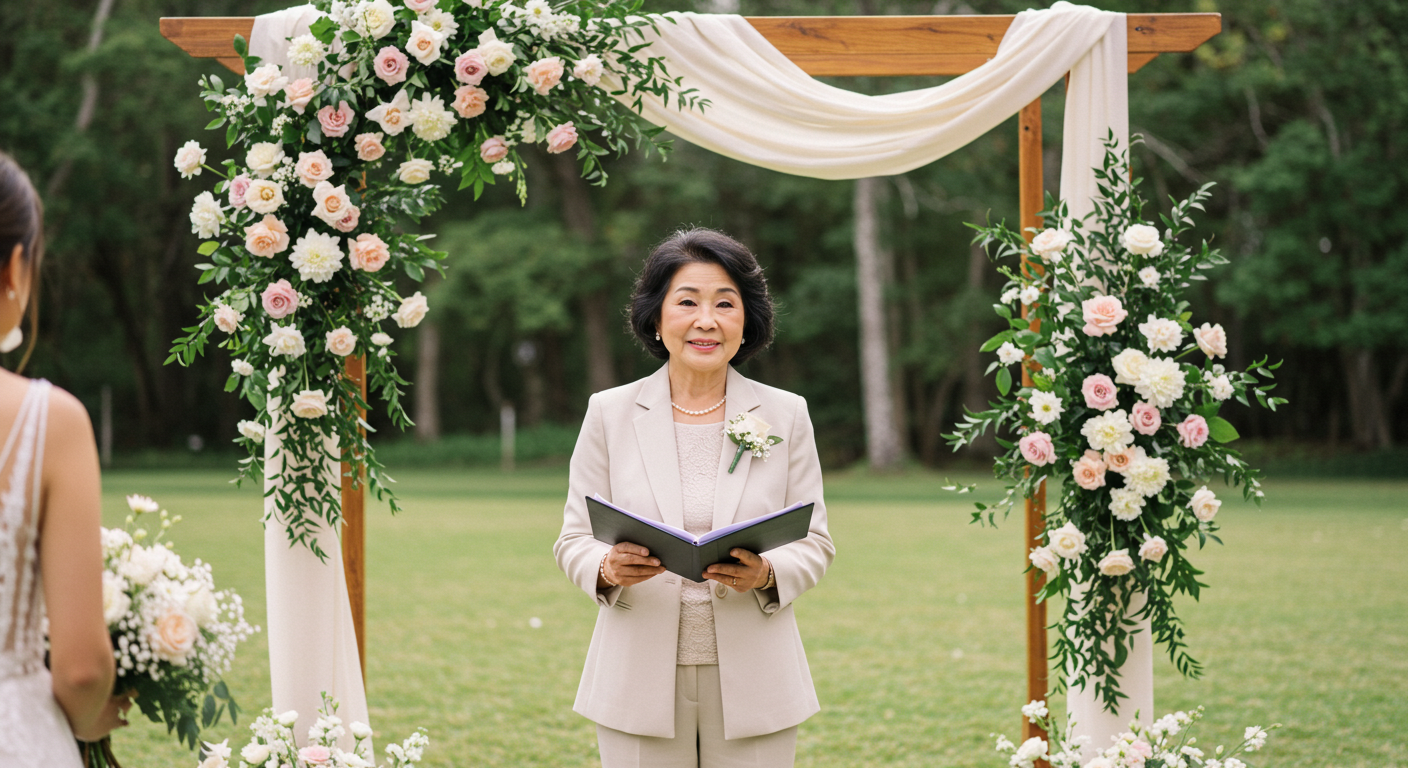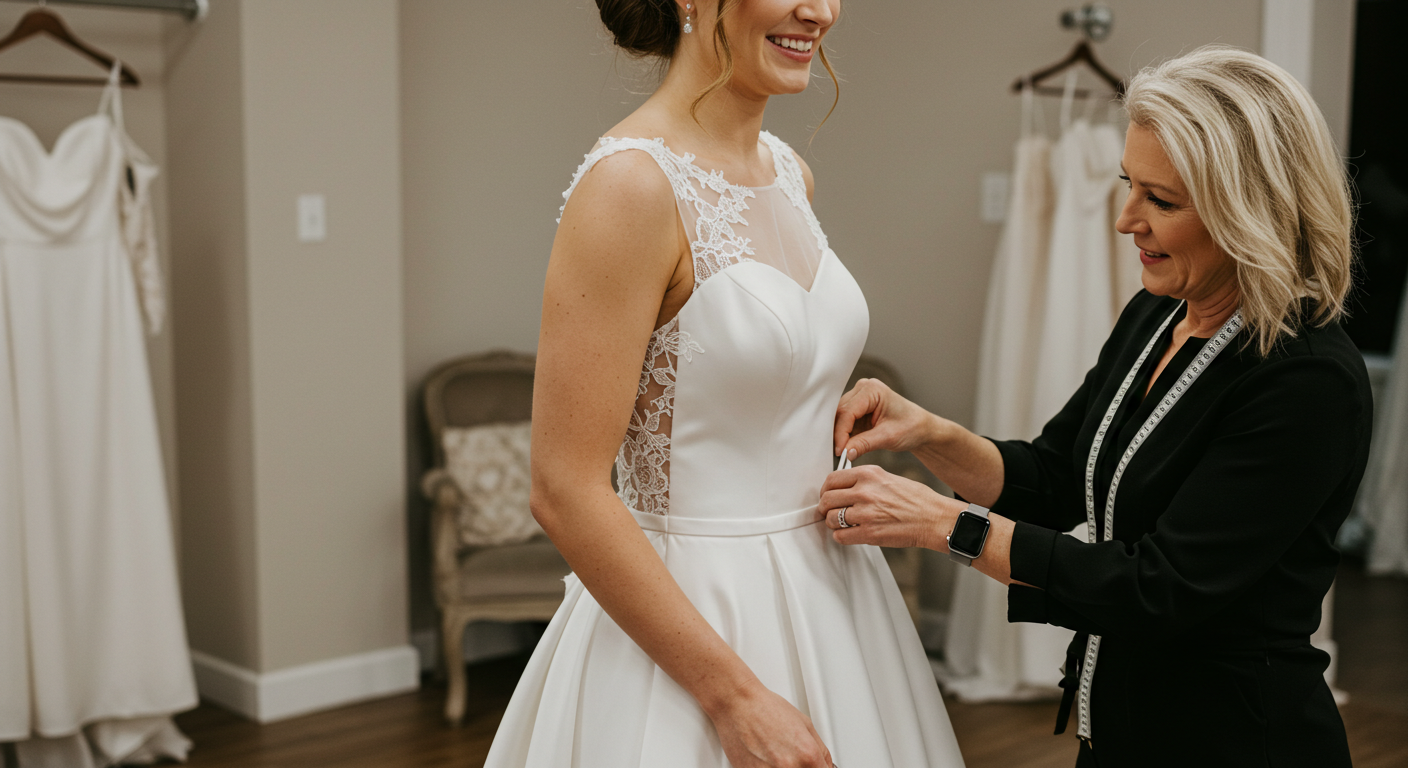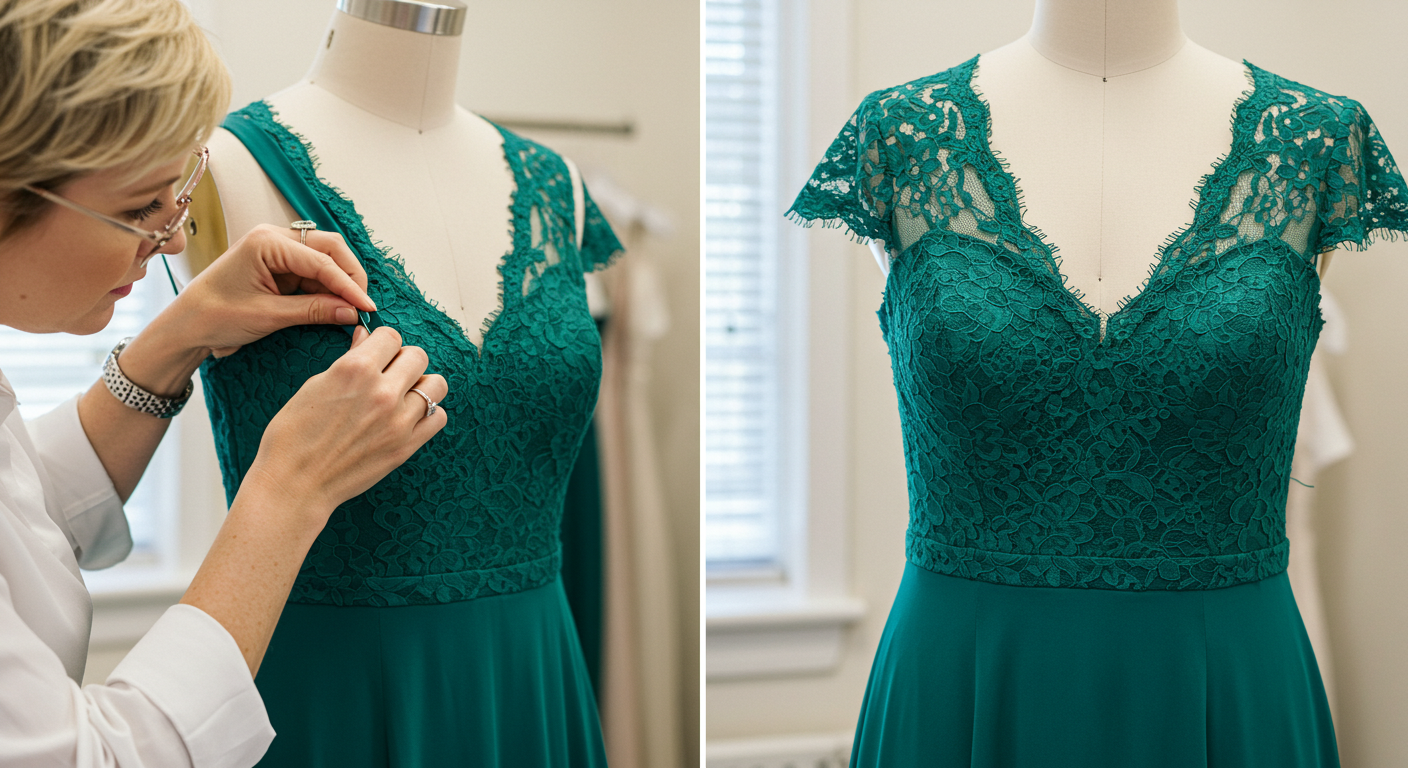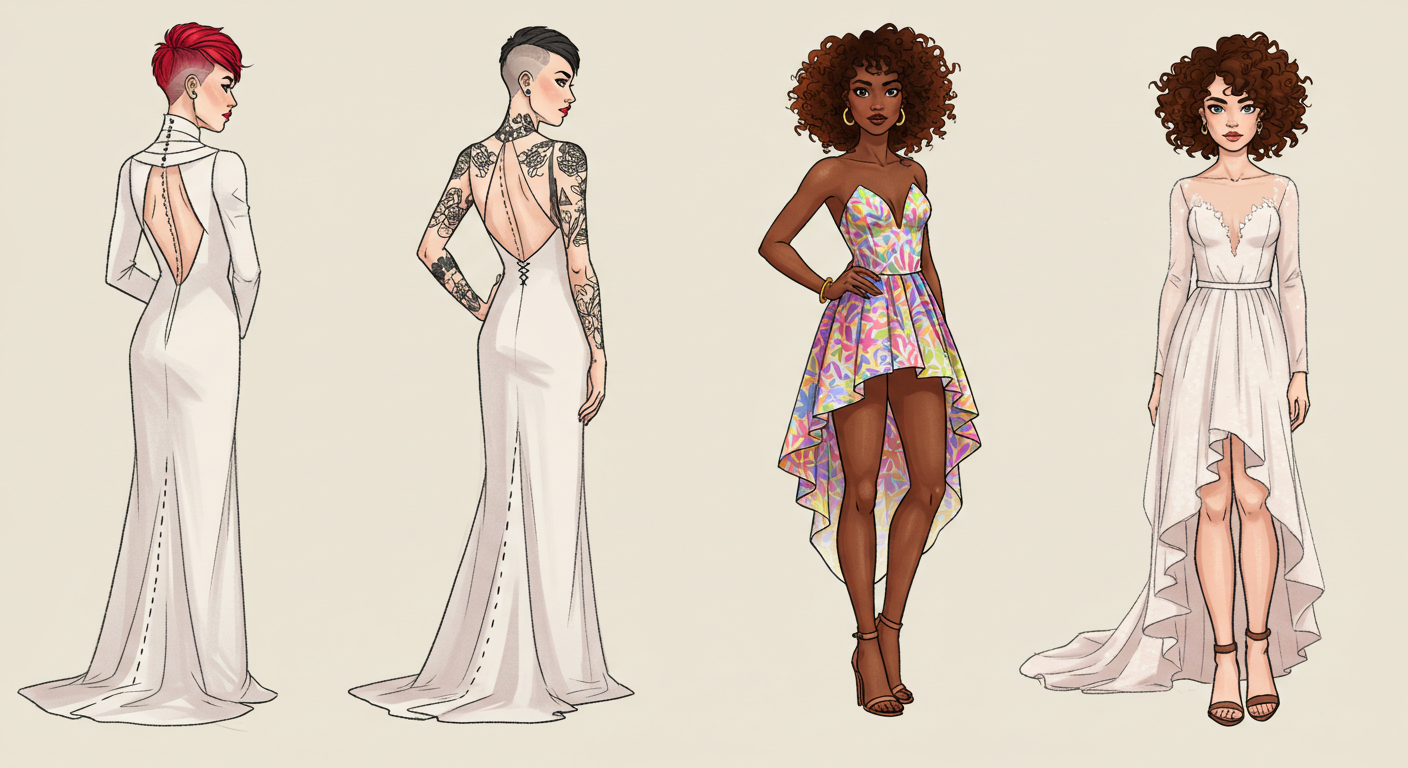Your wedding dress fitting is an exciting milestone in your wedding planning journey. It’s the moment when your dream gown starts to take shape and fit your body perfectly. However, if you’ve never been through the process before, it can also feel a little intimidating. What exactly happens during a wedding dress fitting? How should you prepare? And what can you expect from the experience? In this article, we’ll walk you through everything you need to know about Wedding dress alterations and fittings, so you can feel confident and prepared.
1. The First Fitting: The Starting Point
The first fitting is where the magic begins. During this appointment, your seamstress will assess your dress and discuss your vision for how it should fit. They’ll take precise measurements and pin the dress to mark the areas that need adjustments. This is your chance to communicate any specific requests, such as altering the neckline, adding sleeves, or adjusting the hem. Be honest about how you want the dress to look and feel, as this will guide the entire alteration process.
2. What to Bring to Your Fitting
To ensure your fittings go smoothly, come prepared with the following items:
- Your wedding shoes: The height of your shoes will affect the length of your dress, so bring the exact pair you plan to wear.
- The right undergarments: Wear or bring the bra, shapewear, or other foundation garments you’ll have on under your dress.
- Accessories: If you have a veil, belt, or other accessories, bring them to see how they complement the dress.
- Inspiration photos: If you have specific ideas for alterations, bring photos to show your seamstress.
3. The Pinning Process
During the fitting, your seamstress will use pins to mark where adjustments are needed. They may pin the hem to shorten it, take in the sides for a snugger fit, or adjust the straps for better support. Don’t be alarmed if the dress looks uneven or awkward at this stage—this is completely normal. The pins are just a temporary guide for the alterations.
4. Trying On the Dress
Your seamstress will have you try on the dress multiple times during the fitting to check the fit and make adjustments. They’ll ask you to move around, sit, and walk to ensure the dress is comfortable and functional. This is also a good time to practice moving in your dress, especially if it has a long train or a fitted silhouette.
5. Discussing the Timeline
Wedding dress alterations typically require multiple fittings, so your seamstress will outline a timeline for the process. The first fitting is usually for major adjustments, while subsequent fittings focus on fine-tuning the details. Make sure to schedule your final fitting close to your wedding date (about 2-3 weeks before) to account for any last-minute changes.
6. Common Alterations
Here are some of the most common alterations brides request:
- Hemming: Adjusting the length of the dress to match your height and shoe choice.
- Taking in or letting out: Resizing the dress to fit your body perfectly.
- Adjusting straps or sleeves: Ensuring they provide the right support and comfort.
- Adding a bustle: Creating a way to lift the train for easier movement during the reception.
- Customizations: Adding sleeves, altering the neckline, or incorporating personal touches like lace or beading.
7. The Second Fitting: Fine-Tuning
At your second fitting, your seamstress will have made the initial adjustments, and you’ll try on the dress again to see how it fits. This is the time to address any remaining issues, such as minor tweaks to the hem or waistline. Be sure to move around and test the dress’s comfort level to ensure it’s perfect for your big day.
8. The Final Fitting: The Big Reveal
The final fitting is when everything comes together. Your dress should fit like a glove, and all the alterations should be complete. This is your chance to see the finished product and make sure you’re 100% happy with the result. If everything looks and feels perfect, you’re ready to take your dress home!
9. What If Something Doesn’t Feel Right?
If something feels off during any of your fittings, don’t hesitate to speak up. Your seamstress is there to make sure you’re completely satisfied, so be honest about any concerns. Whether it’s a tight fit, an uneven hem, or an uncomfortable strap, they can make the necessary adjustments.
10. Tips for a Stress-Free Fitting Experience
- Start early: Begin the alteration process 2-3 months before your wedding to avoid last-minute stress.
- Bring a trusted friend or family member: A second opinion can be helpful, especially when making decisions about fit and style.
- Stay calm and patient: Alterations take time, and it’s normal for the dress to go through several adjustments before it’s perfect.
- Trust your seamstress: They’re the experts, so rely on their guidance and expertise.
Conclusion
Wedding dress fittings are a crucial part of ensuring your gown fits perfectly and makes you feel like the best version of yourself on your wedding day. By knowing what to expect and coming prepared, you can make the process smooth and enjoyable. Remember, this is your time to shine, and the right alterations will help you feel confident, comfortable, and beautiful as you walk down the aisle. Happy fitting!




